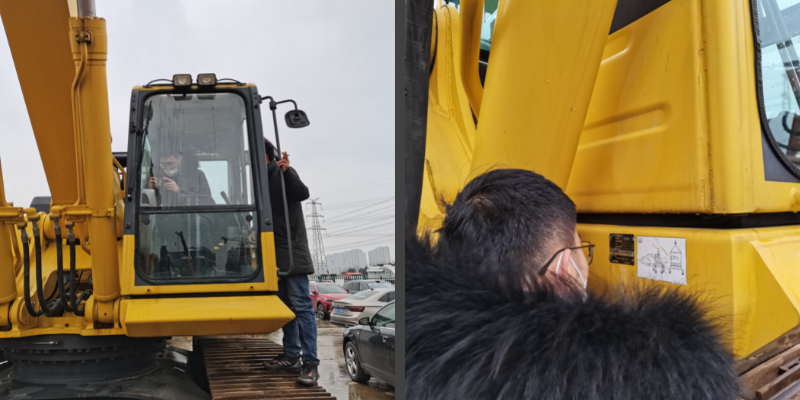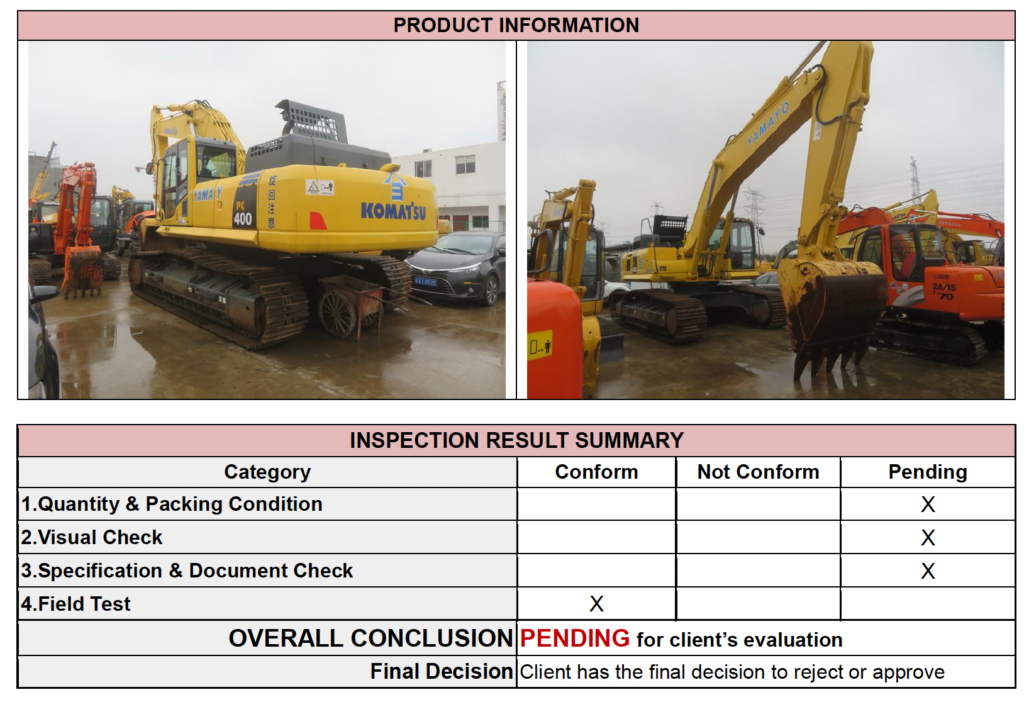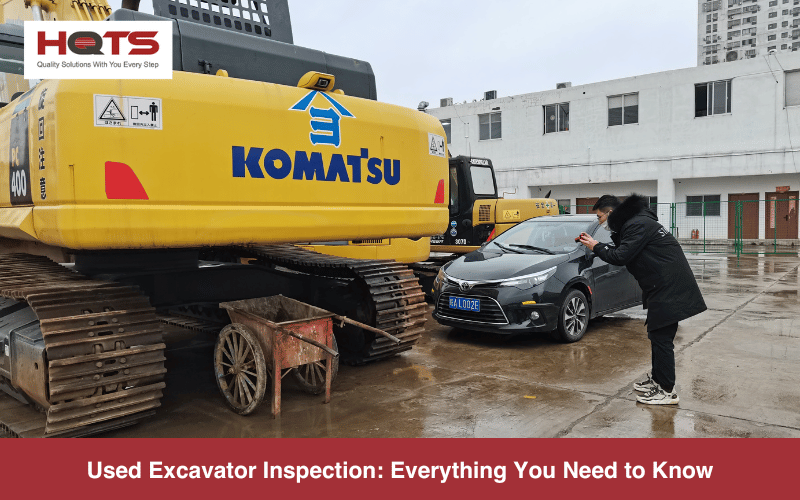Buying second-hand excavators can for many businesses be a smart financial decision, but it comes with inevitable tradeoffs. Make the wrong purchase, and you may end up with an excavator in poor condition that will lead to surprises down the road, ultimately reducing its lifespan.
Let alone, many of these used excavator suppliers are in China and other parts of the world that may be thousands of miles away from you, making it difficult to evaluate the machinery on-site. One way to mitigate risks is to hire a third-party inspection company to conduct quality inspections on your behalf.
In this article, we’ll go through the ins and outs of TPI excavator inspections, so you can make an informed buying decision and reduce risks.
What to Look for When Buying a Second Hand Excavator?
While buying a second-hand heavy equipment can be a cost-effective option, it’s essential to be mindful of several factors – beyond the overall condition of the machinery. These factors generally include:
- Service Records: Check for any previous repairs or maintenance work that has been done.
- Model and Serial Numbers: Verify that the excavator’s model and serial numbers match the documentation provided by the seller.
- Safety Features and Certifications: Ensure that the excavator has proper safety features, such as ROPS (roll-over protective structure) and necessary certifications required in the import country.
- Origin of Manufacture
- The Legitimacy of The Supplier
Suggestion: It is wise to research the seller’s reputation before you complete any downpayment. Auditing the supplier can be an good first start. Typically, supplier audits are conducted by a neutral third-party inspection company. The organisation will review legal documentation (e.g. company legal information, ownership, export capability) to ensure they are not fraudulent or misleading.
How Do You Evaluate a Used Excavator?
Overall, the general evaluation of the used excavator is conducted on-site before the shipment of the goods. Because after all, with only virtual methods, it’s hard to accurately judge the general condition of an excavator.
The on-site inspection allows you to physically inspect the excavator, test its functions, and identify any potential issues that may not be apparent through documents or photographs alone.
What Is Checked During an Excavator Inspection?
At HQTS, we have years of experience conducting used heavy machinery inspections in China, India, and other parts of the world. We have created a strict checklist to catch small and large defects during our inspections. Though it is important to highlight the machinery inspection may differ from case to case. Let’s look at the parameters we generally use when evaluating a used excavator.
1. Quantity and Packing Condition
While not the primary focus during the inspection, the quantity and packing condition of the excavator is still checked. In some cases, some parts may even have been disassembled for transportation or storage.
The inspector will count all machinery, parts, and accessories on-site. In addition, upon request, the inspector will provide loading supervision services to ensure that all items are securely and appropriately prepared for transportation.
2. Visual Inspection
The visual inspection of the excavator is one of the most crucial parts of evaluating the condition of the machinery. This evaluation includes an examination of both the exterior and interior parameters, such as:
- Appearance: Any signs of damage, wear, and rust, such as dents, scratches, cracks, corrosion on body panels, colour deviations, and much more.
- Warning Signs and Emergency Stop: Compliance with labelling requirements and check the efficiency of movable components.
- Name Plate: Production date, identity number, manufacturer name, product description and more.

3. Check Specification and Documentation
The inspector will review order information and check that the introduction and maintenance manuals are in the import and export country’s language, quality certificates, self-exam records, and warranty clauses for the entire machinery.
4. Field Test
One of the critical moments of the inspection is to evaluate the machine’s performance and functionality through a field test. The parameters may differ depending on the type of machinery or case-by-case, but generally includes:
Checking Assembly: Examining the various components and parts of the machine, including the transmission system, electronic and electrical parts (e.g. insulation, wiring, switch), its cooling system, lubrication system, pneumatic system and others.
Functional Test: Test the excavator to check whether it’s functioning correctly, including the effectiveness of the brakes, mobility, controls and gauges, and hydraulic system, evaluating its sound/smoke, signal translation and protective functions, as well as evaluate the produced product according to the specification or general requirement.

Contact us at HQTS to get access to an excavator inspection report.
What Are the Common Defects With Used Excavators?
Based on our experience, a used excavator can have a series of defects which can affect the excavator’s performance and longevity. The condition of the excavator depends heavily on whether the previous owner maintained and serviced it properly, as well as its age. Let’s take a closer look at some of the common issues we see in our construction equipment inspections below.
- Hydraulic System Issues: Including leaks, worn hoses, or damaged valves.
- Engine Problems: These can be minor issues, such as dirty air filters, to major issues, such as damaged pistons or cylinder liners.
- Worn or Damaged Undercarriage: Tracks, rollers, and sprockets can be especially prone to wear and tear.
- Electrical System: Damaged wiring or sensors, dead batteries, or blown fuses.
- Frame and Body Damage: Cracks, corrosion, or other signs of wear and tear on the excavator’s frame and body.
Conclusion: Used Excavator Inspection: Everything You Need to Know
When buying a second-hand excavator, it’s important to conduct a thorough used excavator inspection. In this article, we’ve outlined some of the key parameters, including visual inspections, checking the specification and documentation, and a field test, which is generally evaluated during these inspections.
However, quality checking the used heavy machinery can be challenging, especially if the seller is located far away from you. This is where HQTS comes in – with a strong presence in over 80 countries; we can assist with construction machinery inspections virtually anywhere in the world. Contact us today to learn more!





